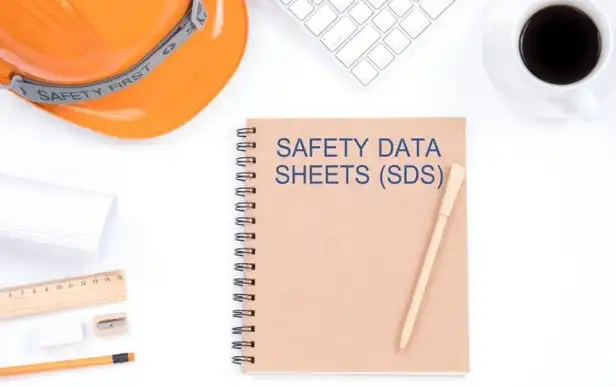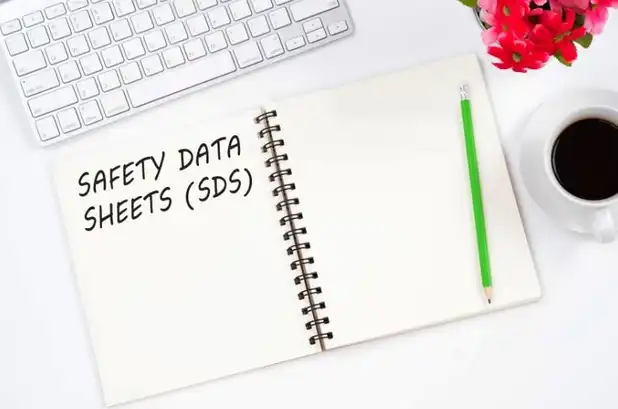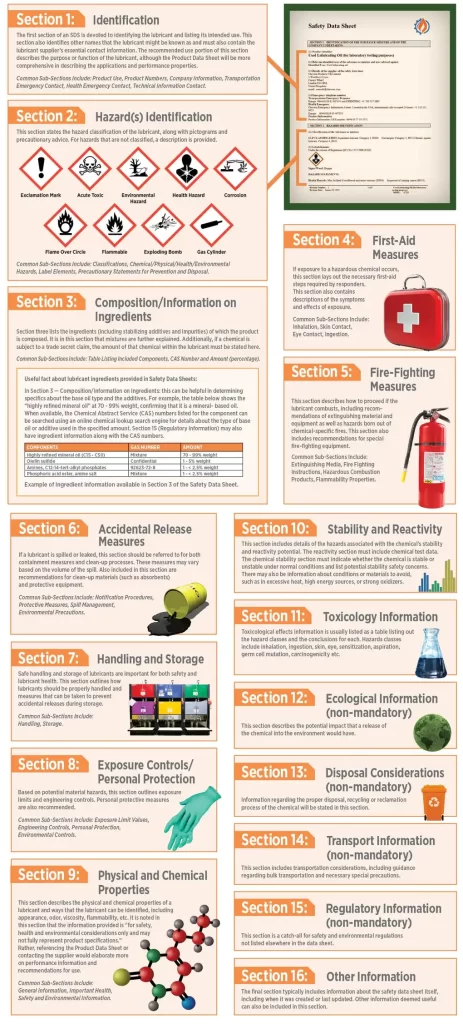Safety data sheets include! Safety Data Sheets (SDS) provide essential details about hazardous chemicals. They explain the chemicals, how to use them safely, and what to do if something goes wrong.
The concept of Safety Data Sheets dates back to the early 20th century. However, due to continuous refinement and global consensus, their present form primarily stems from the Global Harmonization System (GHS) of Classification and Labelling of Chemicals.
The Relevance of Safety Data Sheets (SDS) to Emergency Response

What Safety Data Sheets Include
When there’s a chemical spill or an accident in the workplace, the SDS is like a trusty sidekick, providing vital information to save the day.
- Quick Info in Emergencies: If a chemical spills or someone gets hurt, the SDS tells you what to do in a hurry. It’s like having a cheat sheet during a pop quiz.
- First Aid Instructions: The SDS explains how to give first aid if someone is exposed to a chemical. It’s like having a mini-doctor’s advice right when you need it.
- Safe Cleanup Steps: If there’s a spill, the SDS tells you how to clean it up safely, preventing further problems.
- Emergency Contact Numbers: The SDS provides phone numbers to call for help, like calling a superhero team when trouble hits.
- Chemical Risks: It explains the dangers of the chemical, so responders know what they’re dealing with.
- Handling Chemicals: The SDS advises on how to handle chemicals safely during an emergency, preventing things from getting worse.
In an emergency, every second counts. It’s a crucial tool in turning chaos into calm and ensuring that everyone can tackle the situation with confidence.
How to Use an Safety Data Sheet (SDS)
Think of a Safety Data Sheet (SDS) as a helpful guide that tells you everything you need to know about a chemical. Here’s how you can use it step by step:
- Read Before You Start: Before you even touch the chemical, take a moment to read the SDS. It’s a good habit to know what you’re dealing with ahead of time.
- Find the Right Section: The SDS is split into different sections, each with its own type of information. If you need to know what’s in the chemical, look at the Composition section.
- Follow Safety Instructions: The SDS will tell you how to wear the right safety gear, like gloves or goggles.
- Know What to Do in an Emergency: If something goes wrong, like a spill or someone feeling sick, the SDS has sections to help you. There’s advice on first aid and how to clean up spills.
- Ask Questions: If there’s something you don’t understand in the SDS, ask your teacher, boss, or a safety expert. It’s better to ask than to guess and make a mistake.
- Keep the SDS Handy: Always know where to find the SDS in your workplace or school. If you need it in a hurry, you should know right where it is.
By following these steps, you’ll be able to use the Safety Data Sheet to stay safe and handle chemicals the right way. Always remember, safety first!
What Safety Data Sheets Include?
Safety Data Sheets, often abbreviated as SDS, are comprehensive documents that provide detailed information about the properties of a particular substance, most commonly a chemical.
These sheets are critical resources in workplaces that handle chemicals, providing valuable data to use, handle, and store these substances safely. The aim is to protect the health of workers and the environment and to ensure compliance with local, regional, and international regulations.
An SDS typically includes the following sections:
- Identification of the Substance: This section presents an overview of the substance in question. It often includes the substance’s common name, its uses, and the details of the supplier.
- Hazard(s) Identification: It clearly understands potential risks, the necessary precautions, and the possible effects of exposure.
- Composition/Information on Ingredients: Here, the exact composition of the substance is listed. It includes crucial data on the substance’s components and their potential hazards.
- First-Aid Measures: This section provides detailed instructions on what to do in case of accidental exposure or ingestion. It is a step-by-step guide to managing emergencies related to the substance.
- Fire-Fighting Measures: contains data on appropriate steps to take during a fire. It details the methods suitable for destroying a fire affecting the substance and the potential hazards that can arise from combustion.
- Accidental Release Measures: Guidelines on containing and cleaning up the substance are provided in the event of an accidental release. It aids in preventing further hazards to both people and the environment.
- Handling and Storage: Here, advice on safe and storage practices for the substance is given. It includes specific parameters on temperature, pressure, and other essential factors.
- Exposure Controls/Personal Protection: This section outlines the procedures and tools to minimize vulnerability to the substance. It includes technical control measures and individual defensive equipment recommendations.
- Physical and Chemical Properties: This part of the SDS offers a detailed profile of the substance’s physical and chemical properties, giving insights into how the substance behaves under various conditions.
- Stability and Reactivity: This section evaluates its potential reactions when exposed to specific conditions or materials.
- Toxicological Information: provides detailed data on the harm the substance can cause to the human body, including vulnerability and signs of overexposure.
- Ecological Information: Here, the potential impact of the substance on the environment is detailed. It includes the substance’s toxicity to aquatic life, biodegradability, and other ecological factors.
- Disposal Considerations: This part guides the safe disposal of the substance and any contaminated packaging.
- Transport Information: Crucial information about transporting the substance is provided here. It includes any special precautions necessary for international transportation.
- Regulatory Information: Specific regulations related to the substance in various jurisdictions are outlined here.
- Other Information: This final section provides space for any other pertinent information not covered in the previous sections.
Understanding what safety data sheets include is key to ensuring a safe working environment. Properly utilized, they can protect workers, contribute to environmental conservation, and ensure legal compliance.
Why Safety Data Sheets Matter

From A to Z Understanding What Safety Data Sheets Include
These sheets are key for safety at work. They help workers know about the risks of the chemicals they use. This way, everyone can stay safe and know how to handle emergencies.
Here’s why SDS are super important at work:
- Know Your Chemicals: Like your crayon colours, SDS help you understand what chemicals you’re working with. This way, you’re not guessing and making mistakes.
- Stay Safe: SDS are like a safety guide, telling you how to handle chemicals without getting hurt.
- Emergency Help: If something goes wrong, like a spill or someone feeling sick from a chemical, the SDS is like a quick help guide.
- Follow the Law: There are rules about working with chemicals, and having SDS helps your workplace follow these rules.
- Training: SDS are also used to teach everyone at work to be safe with chemicals. It’s like having a textbook to learn from so everyone knows the safety tips.
So, SDS are super important because they keep everyone informed, safe, and ready to handle chemicals correctly at work.
How to Discover What’s Inside a Product Using Its Safety Data Sheet (SDS)
Finding out what materials are in a product is like being a detective. The Safety Data Sheet (SDS) is your clue book. Here’s how you can uncover the mystery of what’s inside a product using the SDS:
- Get the SDS: First, you need to have the SDS for the product you’re curious about. It’s usually given by the company that made the product or found where the product is used.
- Look for the Right Section: Once you have the SDS, look for a section called “Composition/Information on Ingredients.” This part is like a recipe; it tells you what’s inside the product.
- Read the Ingredient List: In the Composition section, you’ll find a list of ingredients or materials that make up the product. Just like how a cookie has ingredients like sugar and flour, this section shows what’s inside the chemical or product.
- Understand the Ingredients: The SDS doesn’t just list the ingredients; it also tells you how much of each ingredient is in the product. It’s like knowing how much sugar is in your cookie. This helps you understand which materials are in big amounts and which are in small amounts.
- Safety Levels: Next to each ingredient, the SDS might show information about how safe it is. Some ingredients can be dangerous, and the SDS will tell you so you can be careful.
- Ask for Help If Needed: If you find hard words or don’t understand something, it’s okay to ask an adult, teacher, or someone who knows about chemicals. They can help you understand the ingredients better.
- Use the Information Wisely: Now that you know what’s in the product, you can use it safely. If you know something is dangerous, you can be extra careful when using the product.
By following these steps, you can be a detective and find out all about the materials in a product using its Safety Data Sheet. It’s a great way to be smart and safe!
What details about transportation are included in an SDS?
A Safety Data Sheet (SDS) is like a travel guide, but for chemicals! When chemicals need to go on a trip, whether it’s by truck, ship, or plane, there are special rules to make sure they travel safely. The SDS has a section that’s all about how to move these chemicals the right way.
Here’s what the SDS tells you about transporting chemicals:
- Packing Tips: Just like you pack your suitcase carefully for a trip, chemicals need special packing too. The SDS says how to pack them so they’re safe and don’t spill or break.
- Labels and Signs: When chemicals travel, they need labels to show they’re chemicals and might be dangerous. It’s like wearing a name tag that says, “I need extra care!”
- What Not to Do: There are things you shouldn’t do when moving chemicals, like keeping them too hot or too cold. The SDS tells you what to avoid so the chemicals don’t get upset and cause trouble.
- Emergency Info: If something goes wrong during the trip, like a spill or leak, the SDS has advice on what to do. It’s like having a plan if your car breaks down on a road trip.
By following the transportation details in the SDS, people can make sure chemicals get where they’re going safely, without any problems. It’s all about making the journey safe for everyone, including the chemicals!
Common Misconceptions About Safety Data Sheets (SDS)
- For Everyone, Not Just Experts: Some people think that only scientists or people who know a lot about chemicals need to read Safety Data Sheets (SDS). But that’s not true! SDS are for everyone who uses or is around chemicals, not just the experts. They help keep everyone safe.
- They’re Made to Be Understood: You might hear that SDS are too hard to understand. But actually, they’re made to be clear for everyone. They have important safety information that’s organized so you can find what you need to know easily.
- All Chemicals Need an SDS: It’s a common mistake to think that only the most dangerous chemicals need an SDS. In reality, all chemicals can be risky in different ways, so they all need an SDS to tell you how to be safe.
- Always Read the SDS: Even if you’ve used a chemical many times, it’s still important to read the SDS. Sometimes, the safety advice or information about the chemical can change. Always checking the SDS means you’re up to date on how to stay safe.
- Every Chemical’s SDS is Unique: Each chemical is different, so each one has its own SDS. Don’t assume they’re all the same. Make sure to read the specific SDS for every chemical you use to know the right safety steps.
- Useful Every Day, Not Just in Emergencies: SDS are super helpful in emergencies, but they’re also important for everyday safety. They give you the info you need to prevent accidents and use chemicals safely all the time.
- SDS Important Along with PPE: Wearing personal protective equipment (PPE) is great, but it’s not the only thing you need to do to stay safe. Reading the SDS tells you more about the chemical, how to handle it, and what to do in case of an accident.
You can use Safety Data Sheets the right way and help keep your workplace safe and sound.
Conclusion
We’ve learned a lot about safety data sheets, or SDS.
They have 16 parts, each with special details, so the answer is there no matter who needs to know something.
SDS are super important at work, especially where people use or are around chemicals. We also talked about some wrong ideas people might have about SDS and cleared those up.
They’re not just on their own; they’re part of how we make sure everyone stays healthy and safe. Everyone, from the boss to the newest worker, must understand and use the SDS.


